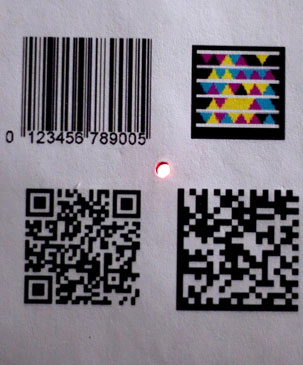Bokode: Barcodes Done Better
-
-
slice.mit.edu
- 1
Filed Under
Recommended

Barcodes are ubiquitous, producing little pops of information at checkout counters worldwide. The Media Lab has come up with a new, tinier barcode that could provide information useful to shoppers as they scan the shelves and could lead to new types of presentation devices, video games, or motion-capture systems.
The new system, called Bokode, is based on a different way of encoding visual information, says Media Lab Associate Professor Ramesh Raskar, who leads the lab's Camera Culture group. The new approach encodes data in the angular dimension: Rays of light coming from the new tags vary in brightness depending on the angle at which they emerge. The name Bokode comes from the Japanese photography term bokeh, which refers to the round blob produced in an out-of-focus image of a light source. The Bokode system uses an out-of-focus camera—which allows the angle-encoded information to emerge from the resulting blurred spot— to record the encoded information from the tiny tag.
Bokodes have several advantages. They can be read from several meters away by a cell phone camera; they can provide much more information, such as a complete nutritional description; and you can scan several nearby items to compare them.








Comments
Alan Lawee
Sat, 08/29/2009 10:26am
I find the concept and the article fascinating.
Do you have an estimate of the amount of information that could be encoded in a tag read at a distance of, say, 2m? I realize that the answer depends to some extent on the size of the tag, but I am looking for an order of magnitude rather than a precise estimate.